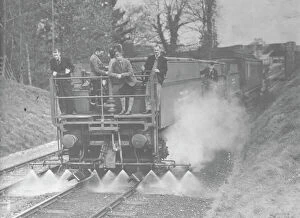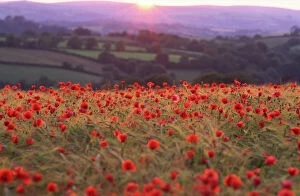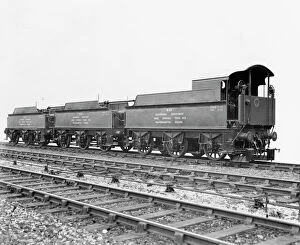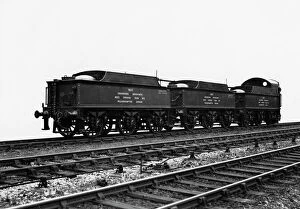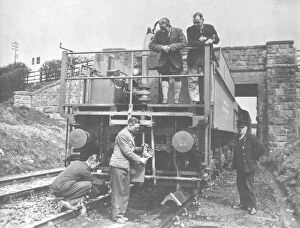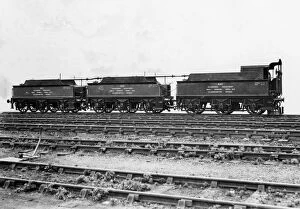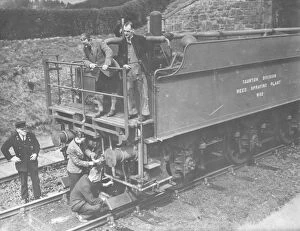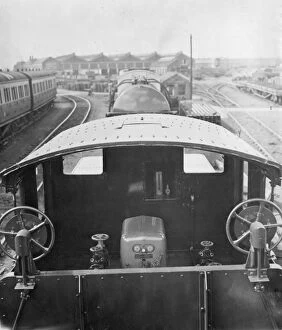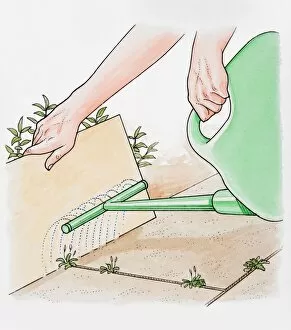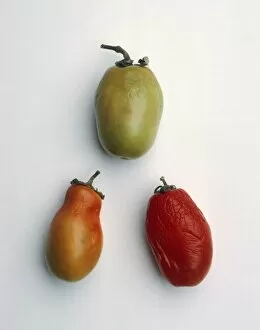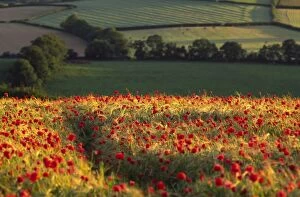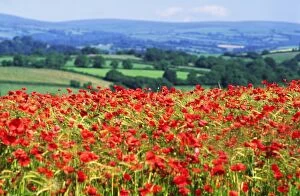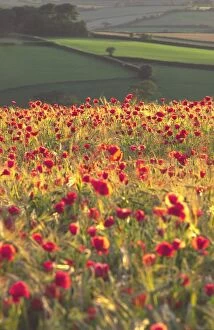Weedkiller Collection
"Unveiling the GWR Weedkilling Train: A Revolutionary Solution to Taming Nature's Wild Growth" In 1938
For sale as Licensed Images
Choose your image, Select your licence and Download the media
"Unveiling the GWR Weedkilling Train: A Revolutionary Solution to Taming Nature's Wild Growth" In 1938, the Great Western Railway introduced a groundbreaking innovation in agriculture - the GWR Weedkilling Train. With sprays mounted on its carriages, this train embarked on a mission to conquer unruly vegetation that threatened fertile lands across England. As the sun gracefully illuminated Dartmoor Devon's horizon, it revealed a picturesque landscape adorned with rolling fields and enchanting woodlands. Amidst ripening barley stood an unexpected sight - a vibrant crop of poppies thriving amidst rich crops. This captivating scene was made possible by the diligent work of the GWR Weedkilling Train. The tenders W85, W84, and W83 accompanied this remarkable train as it traversed through vast expanses of countryside. These tenders carried vital supplies needed to combat nature's relentless growth and preserve bountiful harvests for generations to come. With meticulous precision, farmers relied on this innovative solution to protect their crops from invasive weeds. The view from within the cab offered an awe-inspiring perspective as oil tankers ensured a steady supply throughout each journey. Across distant lands in Iowa, United States of America, another success story unfolded. A healthy green mid-season soybean field emerged after being sprayed with herbicide. Broadleaf weeds succumbed while rows flourished under careful protection – evidence of mankind's ability to harmonize with nature using advanced techniques. Even at close range, hands holding cardboard sheets showcased humanity's dedication towards safeguarding delicate plants during spraying sessions, and is through such attention to detail that we strike a balance between eradicating unwanted growth and nurturing our precious flora. However powerful weedkillers may be when wielded responsibly, caution must prevail. Plum-shaped tomatoes bore witness to potential damage caused by hormone-based weedkillers – reminding us that responsible usage remains paramount in preserving the delicate ecosystems we depend on.

